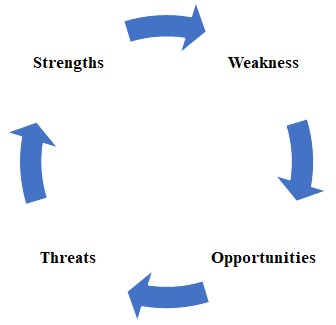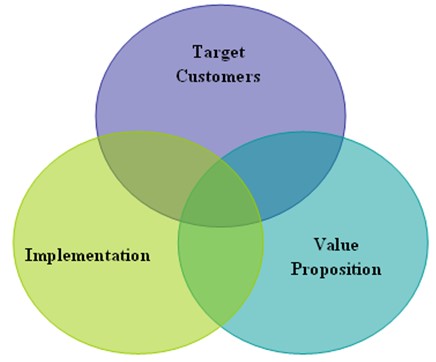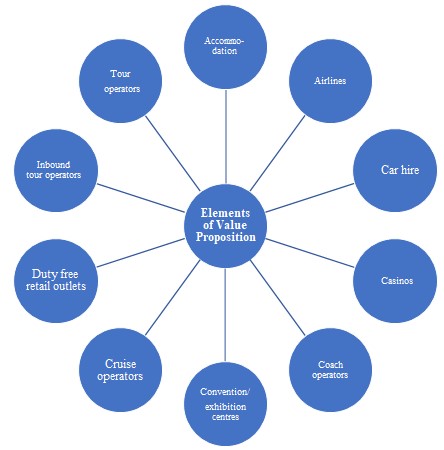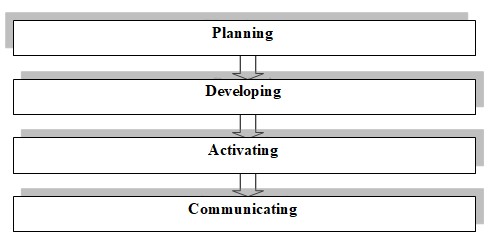Introduction
Australia is popular in terms of products, services, art, and cultural trading in the global market. Therefore, the image of this country is well known worldwide but the brand image is not strong enough than other developed countries in the international market. For this reason, the Australian Government is developing a creative tender to build the “Brand Australia” project with a big budget of $20 million within 2010.
This plan has been announced for increasing Australia’s identity in an international context. Trade Minister of Australia, Simon Crean has urged the business concerns of the country to sell Australia to the rest of the world to develop the brand image of the country. A perfect brand image can capture the essence and quality of Australia from the trade sector of the country. Therefore, Australia has to identify a way to develop its brand name in other countries. For this reason, the business concerns of Australia have to engage themselves in this brand-building project to prove their substantiality in the global market and to uphold their country’s image. (umbrella, 2009)
Public Organisation of Australia
An organization which has directly owned and lead by the government or whose lion shares are under governmental agency ownership, it has called a public organization. There are various forms of public organization in Australia but the paper has organized with functioning category rather than formation. Public organizations of Australia have been experiencing some unique sets of marketing and operational environment. There are many types of public organizations in Australia, which includes financial organizations, media, Government entities, citizen action groups, local entities, general public organizations, and internal organizations.
All these organizations have publics associated with them such as financial publics, media publics, government publics, an action group of public, public, and internal publics. To Brand Australia, all of its public organizations have some sort of responsibilities and thus the public relation with each of the organizations is important. For example, financial publics who have the responsibility to work to facilitate the financial services of an organization and thus the financial sector of Australia can build the brand. Other publics have also these sorts of activities.
Among many of the organizations, in this report, the Australian Tourism Export Council (ATEC) is selected. As, the tourism industry has great scope to open its innovativeness, adoption, and resilience worldwide. Australia has lots of nature-based beauty and creativity to sell it in the world market. Therefore, ATEC has the opportunity to sell Australia as a brand by showing the natural beauty of the country itself (ATEC, 2008).
Current Market Situation
Building Brand Australia has the goal to integrate all the key export industries of Australia, which will be the key driver of building brand Australia. These export industries include tourism, education, manufacturing, and agriculture aimed to market these products to the rest of the world. The managing director Mr. Matt Hingerty addressed that Australia as an exporting nation has some unique and famous products, services, arts, and cultures to sell to the other countries but the effective branding of Australia as an exporting nation was failed as all of these did not stitch altogether. Besides, he argued that if all these exportable entities come together under a single brand name, all the individual exporters would facilitate to access the outer market easily.
As a result, those who are buying what can be the business delegates in future and after the year, they can be the leisure tourists. The ACCC (2009) argued that the BBA project is an upcoming event, which will start from February 2010 and be assisted by an Expo 2010 in May in Shanghai, which will be the first ever-international launch of the project. All the highlighted exporting industries will be displayed their products to the probable buyers featuring the key attributes of the products and services. (The ACCC, 2009)
Among all of these industries, The ATEC is the highest entity to integrate the tourism companies of the country. Exporting tourism is an efficient branding strategy for a country like Australia. ATEC has nine branches and all of its branches are incorporating to ensure smooth tourism export. These branches include New South Wales, South Queensland, North Queensland, NT central, NT top-end, South Australia, Victoria/Tasmania, ACT, and western Australia. ATEC is facilitating all of the organizations of these branches by developing a single structure of firms, standardize the business standards, designing the financial policies, communicating the promotional activities, and imposing the same business conduct standards for all (umbrella, 2009).
Australia got about 5.5 million tourists last year with a growth rate of 2% than the previous year. In this year, the market was in the United States, New Zealand, The United Kingdom, Japan, and China. All of these accompanied about half of the international tourists. In this year, the contribution of the international visitors to Australia’s economy increased by 6% and rose to 25 billion Dollars. According to the Tourism Australia Annual Report 2009, the environment of aviation was stable for the year and the increase in the international passenger was rose by about 1.1%. All the aviation service providers are developing their capacity and added new carriers.
The efficient people would recruit in the industries and thus the productivity and serviceability are developing. Besides, Different promotional campaigns are also helping, in this case, to accelerate by both government entities and private organizations. However, the domestic tourism industry faced some challenges. Such as the decrease in overnight trips, visitor’s night and overnight spend and as a result, the Total Domestic Economic Value was declining by about 4%. However, the effective effort of all the skilled human resources in the industry is trying to diminish this effect (Australian Government 2009).
SWOT and Issue analysis
The tourist industry of Australia has some uniqueness and various features of Australia like its scenic beauty are facilitating it. There are many attractive tourists spots like Great Barrier Reef, Blue Mountain, Fraser Island, Ayers Rock, Kakadu National Park, Kangaroo Island, Kata Tjuta, Purnululu National park, and many more. Australia is attracting travelers from all over the world with its glittering rivers and sea, enlightened wildlife, imposing mountains, charming scenery, crystal-like waterfalls, and precious sun-kissed beaches all can be enjoyed in Australia.
There are about 500 national parks, which are always a great attraction to tourists. Besides, the Australian Government is announcing some places as national landscapes like Kangaroo Island. The basic nature of the Australian scenic beauty is the integration of rural nature with the urbanized facilities everywhere. However, the industry has some threats too. (Tours to Australia, 2009) To assess the environment of ATEC the SWOT analysis has shown below:

Strength
- Attractive Tourists’ Spots: As mentioned earlier, the tourism sector of Australia has the most attractive tourist spots to attract travelers. Besides, the travelers can get all sorts of facilities like transportation, accommodation, guides, and much other stuff, which is designing for targeted the tourists only.
- Government Initiatives: According to the Tourism Australia Annual Report 2009, the government of Australia is very concerned about the tourism industry and helps the industry in every possible way. Thus, the government is playing as an associate to the ATEC.
- Use of Technology: ATEC along with the government is using all means of technologies like building websites for the probable travelers, reservation or booking of hotel rooms online, and many more. ATEC also does some promotional campaigns over the internet.
- Efficient Marketing: An efficient group of marketers is assisting the ATEC with innovative marketing campaigns like “come walkabout”. Besides, there is a skilled consumer-marketing group in ATEC, which has three units as Brand, Visual Assets, and Digital (Australian Government 2009).
- Efficient Public Relation: ATEC has a good relationship with its possible customers globally which worked as a storyteller of the tourism of Australia.
- Research and Strategy: ATEC has a strong research group that does the research works and provides the appropriate information based on which ATEC can be able to take perfect strategies (Australian Government 2009).
Weakness
- Lack of Awareness: Australia has a lack of brand awareness as a country full of tourist spots. However, to improve that situation the Building Brand Australia project is to be taken;
- Challenges in the Domestic Tourist Sector: The domestic Tourism sector is experiencing some challenges, which can make the growth of this sector slow (Australian Government 2009).
Opportunities
- A paradise for the Travellers: ATEC can able to attract global travelers; Australia can become a paradise for travelers.
- Build as a Brand: Through the initiatives of ATEC, Australia can become a brand.
- Addition to the National Economy: As more travelers come to Australia, more the national income would increase in a rapid manner. Thus, the economy of Australia will be strengthening (Australian Government 2009).
Threats
- Economic Crisis: According to the Tourism Australia Annual Report 2009, the present financial crisis observed by the world can be a threat to the development and opportunities of ATEC. As the people of many developed countries have less money left to spend on travel, the number of travelers visit in Australia can be decreased in number in upcoming years.
- Climate Change: Because of global warming, the climate of Australia is also changing. This can make some sort of abolition of the natural scenic beauties of Australia and travelers may not pay attention to this beauty (Australian Government 2009).
Objectives
As ATEC is a national peak industry organization for presenting tourism operating and supplying with inbound tour operators, accommodation, attractions, airlines, cruise lines, transportation, and entertainment purposes. The code of business of ATEC is required complying the objective of the organization. The main objective of the business of ATEC is providing professional and business standards of members of this organization to differentiate the risk of transaction with potential business partners by non-members of this organization. The potential business partners of ATEC are provided by value-added membership services with an operational framework, which can build branding of Australia with a strong and sustainable relationship worldwide. (ATEC 2009)
To meet up the objective of ATEC in brand building of the country, the Australian Government is providing appropriate facilities to improve the quality of tourism experiences of Australia for external people from worldwide. So, the primary objective of ATEC for brand building projects should be to ensure quality to customers’ experiences by appropriate accreditation and promotional framework of the organization to the global market. ATEC has to become familiar as a sustainable and capable business for emphasizing customers’ expectations towards business. ATEC has to be recognized itself to guarantee customers’ preferences according to global market customers.
For developing this objective, ATEC has to recommend some key principles to fulfill its goals, which are:
- Accessibility: The tourism programs offer by ATEC should be affordable and accessible to all potential customers from worldwide (Commonwealth of Australia 2008).
- Visibility: ATEC should build it’s brand visible to customers and other related stakeholders. The positive perceptions of this organization are influencing the purchase decisions of consumers in the international market.
- Credibility: It should be credible for generating a high level of integrity to its customers with brand development and business encouragement.
- Usefulness: The tourism programs given by ATEC should be useful in terms of the business and travel experiences of customers, which can maximize the participation of customers towards this organization.
- Inclusivity: ATEC should have developed tourism programs for all sectors and all sizes of customers worldwide.
- Sustainability: ATEC should structure its services in a flexible way according to changing business environment in the world market to improve and support associated programs of this organization (Commonwealth of Australia 2008).
Marketing Strategy
Marketing strategy is a process, which can focus on an organization’s energies and resources for increasing sales and dominating the target market. For ATEC, marketing strategy should be combined product development, promotional activities, and distribution channels, pricing of programs, relationship with management and customers, which can achieve objectives within a limited period. In this strategy, the target market segments, positioning of branding, marketing mix, and resources allocation have to determine by ATEC. It is also an effective way to combine ATEC’s overall strategies, to engage with its target customers, and competitors in the global market (ATEC 2009). There are three key components of the marketing strategy of ATEC, to complete its objectives and mission of the organization in building the brand of Australia, which are:

- Target Customers: As, ATEC has to consider the global market, so, the target population of ATEC are including according to geographical, industrial, business and travel programs of customers’ preferences. Each of every sector is defining target customers of ATEC in the basis of funds, frame sources, and significant objectives of using its tourism programs. The efficient service programs of ATEC can achieve more target customers to facilitate its objective and marketing strategies. As customers are from the international market, so, they should be targeted online or call agency systems. (Statistical Clearing House, 2005-2006)
- Value Proposition: ATEC is Australia’s leading tourism program providing organization in local and international context with the help of Australian Government in managing brand name of this organisation worldwide, increasing brand name with nation’s brand, by including this organisation in “Nations Brand Index 2008”. (Nation Branding, 2008) Therefore, to represent Australia as a brand, ATEC have to provide brand message of the organisation, which is working as value proposition of the organisation and the country’s image. The value proposition is tactical strategy of market to establish brand image in regional and global level of customers. From very beginning, Australia has greater reputation of travel destination to rest of the world. As a result, ATEC has to create value proposition of the organisation by making positive awareness of brand and its consolidation to its customers (Tourism Australia (2008). It should also develop some key elements of proposition, which can make ATEC more suitable and available to customers according to their preferences:

- Implementation:The tourism industries of Australia are already struggling with existing price in current market situation in international market, because of economic recession, increased price of oils etc. ATEC is also suffering these problems, which are influencing economic performances of Australia. ATEC has to develop marketing strategies’ ideas in terms of new advertising campaigns, new promotional activities, new programs, processes, materials, products and creativity in its services. (Australian Tourism Export Council, September 2008) ATEC has to concentrate on some marketing strategies’ concepts, which are:
- Pricing Strategies Implementation: ATEC has to implement pricing strategies with good performances of services with each market segment by offering premium prices to its target customers. Because of good performances of ATEC can gain good profit for organisation and prospective economic aspects of Australia.
- Defensive Strategies of Competitors: ATEC has to analyse competitors’ abilities to meet the demand of global customers. Therefore, potential threats should be prepared according to defensive strategies in the tourism market.
These implementation strategies have working as barrier in terms of financial conditions of organisation and economic development of country, to brand tourism worldwide. These barriers can recommend building up themselves as more competitive and vibrant to meet biggest challenges of Australia with limited budget and period (South Australian Tourism Commission 2008).
Action Planning Programs
ATEC has to develop Tourism Implementation Action Plan to achieve success of target market by giving higher performances in economic growth, investments in exports, regional population, quality of life, and infrastructure development of Australia. According to (South Australian Tourism Commission 2008) there are four critical success factors should outline and analyse by ATEC to implement action plan in building brand of Australia with growth opportunities of $6 billion by year of 2013, which are:

- Planning:
- Reviewing Australian Tourism Plan (ATP) by focusing on industry and its accountability of the country
- Analysing global distribution strategies of to implement tourism programmes worldwide.
- Developing:
- Expanding existing tourism programs by major events and festivals in worldwide.
- Attracting new and major events arranged in international context.
- Developing niche market, then targeting on broad market.
- Focusing on infrastructural programmes by implementing regional and projected strategies
- Activating:
- Ensuring three years funding programmes with regional and Government of Australia,
- Arranging top and others trade events in international market.
- Representing Australia and its tourism internationally,
- Developing online services to minimise world market on hand,
- Building relationship with proper networking,
- Supporting tourism of conferences, conventions, and meetings, those have mainly arranged for business purposes.
- Communicating:
- Arranging marketing campaigns with support of trade and airline partners
- Maintaining Journalist Programmes and other public relation activities,
- Cooperating with retail-marketing programmes of tourism,
- Targeting appropriate customers segments,
- Supporting regional marketing plan also.
These implementing plans would provide ATEC to analyse main drivers of tourism demand, to know availability of target customers, and other factors, which has related with managing and developing brand of Australia in worldwide by tourism programmes of this organisation. The success factors has possibilities to achieve by communicating with domestic and international markets, developing usual and back plans of strategy implementation, developing and aligning rules of Government in tourism programs, and developing strong industry partnership in tourism industries.
Therefore, by implementing plan of ATEC in overseas market, international tourism opportunities of Australia can grow and develop in constant way. Already the tourism of Australia is in top three position of international market. Consequently, it has great possibilities to improve more itself in travel market of worldwide with potential customers (South Australian Tourism Commission 2006).
Conclusion
There are number of marketing strategies and action plans to develop brand of Australia in tourism industry with the support of governing body of the organisation for Brand building of Australia. ATEC also is taking Brand building of Australia project to develop brand image of this country worldwide. This ongoing government approach and investments will help building brand and standards of country in international market with projected budget, financial implications and requirements of ATEC by its future prospects to rest of the world.
References List
ATEC (2008) Carbon Pollution Reduction Scheme Green Paper. Web.
ATEC (2009) ATEC Member Code of Ethics and Business Practice. Web.
Australian Government (2009) Tourism Australia Annual Report 2008-2009. Web.
ATEC (2009) Privacy & Disclaimer. Web.
Commonwealth of Australia (2008) A National Tourism Accreditation Framework. Web.
mUmbrella. (2009) Government calls creative tender for new $20m Building Brand Australia project. Web.
Nation Branding (2008) Business leaders want a Brand Australia Council. Web.
National Statistical Service (2006) Statistical Clearing House: Tourism Marketing Expenditure Survey. Web.
South Australian Tourism Commission (2006) South Australia’s Strategic Plan: Tourism Implementation Action Plan. Web.
South Australian Tourism Commission (2008) South Australia’s Strategic Plan- OBJECTIVE: Growing Prosperity. Tourism Implementation Action Plan. Web.
The ACCC. (2009) Australian Tourism Export Council (ATEC). Web.
thUmbrella. (2009) ATEC backs new Building Brand Australia project. Web.
Tourism Australia (2008) Need More Assistance? Web.
Tours to Australia. (2009) Australia tourist attraction. Web.
